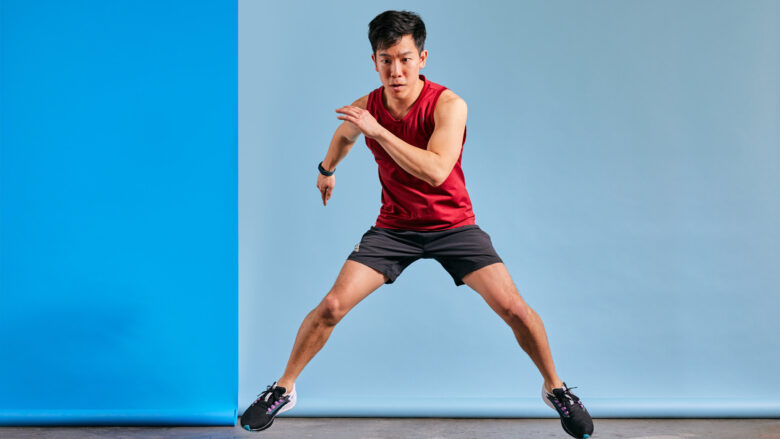High-intensity workouts have become very famous in recent years because they are great for burning calories, building strength, and generally being healthier. During these training sessions, short periods of intensive effort are alternated with periods of rest or lower intensity. If you want to get good at high-intensity workouts, you need to understand how they work and incorporate them into a comprehensive training plan.
1. Understand High-intensity Exercises
High-intensity exercise, often simply called HIIT (high-intensity interval training), involves short bursts of high-intensity activity, followed by rest or less intense exercise. This approach works for more than one reason. First, it helps you burn more calories during and even after your workout, thanks to EPOC (or additional oxygen consumption after exercise). Secondly, it helps strengthen muscles, improve overall endurance, and improve cardiorespiratory fitness.
2. Do High-intensity Exercises
You should warm up, perform your main exercises, and then cool down for well-structured, high-intensity exercises. A warm-up prepares your body for the next level of intensity by slowly increasing your heart rate and improving blood flow to your muscles. Light aerobic exercises and dynamic stretching are often part of this.
Most high-intensity workouts consist of main exercises. It can include many different exercises, such as running, jumping, training with your own body, and lifting weights. During tough intervals, you need to push your limits while maintaining good form to avoid injuries. The rest period should be long enough to allow the body to heal, but not so long that the heart rate remains elevated.
People often forget to cool down, but it is very important to prevent muscle stiffness and speed healing. To help slow your heart rate, breathe deeply and do inactive stretching exercises.
3. Vary Your High-intensity Exercise Routine
There are many high-intensity exercise programs, but it’s important to create one that’s right for you, based on your fitness level, goals, and personal taste. Those just starting can start with shorter, less intense rounds and then work their way up as their physical fitness improves. For extra challenges, more experienced individuals can add more difficult daily activities and shorter rest periods.
It’s important to include a range of exercises to avoid getting bored and ensure you get a full workout. When you combine cardiovascular exercise with strength training, you get a complete fitness experience. Adding equipment like medicine balls, kettlebells, or resistance bands can also make your exercises more fun.
4. Focus on Progress and Intensity
To excel at high-intensity workouts, you need to track your growth and exercise intensity. During hard intervals, a fitness tracker or heart rate monitor can help you stay within your target heart rate zone. Keeping a training log can help you understand your progress and identify areas that need to change by writing down the exercises you do, when you practice them, and how hard you train.
To make progress during a high-intensity workout, you don’t always have to increase the stress. For example, you may need to improve your form, do more reps, or spend less time stopping. To avoid plateaus and maintain the difficulty of your workouts, you need to make steady progress.
5. Pay Attention to Your Body
Although high-intensity exercise is good for you, it is important to pay attention to your body and not overtrain it. Overtraining can make you fatigued, more prone to injury and reduce your efficiency. Watch for signs of fatigue, pain, and other problems that don’t seem normal. Rest days are an important part of any training program if you want to heal and prevent overuse injuries.
Conclusion
To excel at high-intensity workouts, you need to understand how they work, create a balanced schedule that fits your workouts, track your intensity and progress, and listen to your body. Incorporating these things into your fitness routine will help you get the most out of high-intensity training and achieve your fitness goals quickly and easily.
FAQs
1. What does high-intensity exercise mean?
High-intensity interval training (HIIT) is a type of exercise in which short periods of intense exercise are followed by rest or lower-intensity exercise. It is designed to help you burn more calories, get in better shape, build muscle, and improve your overall endurance.
2. How do I plan a very tough workout?
A well-planned high-intensity workout should include a warm-up, intervals of main work, and a cool-down. The warm-up prepares the body for the main workout, including high-intensity interval training. Relaxation involves controlled breathing and stretching to help the body heal.
3. Can people who are just starting to exercise do intensive exercises?
Yes, people who are just starting can start with shorter, less intense rounds and then work their way up as they get stronger. It is important to ensure that the exercises are appropriate for an individual’s fitness level, goals, and personal tastes.
4. What exercises can be done for high-intensity exercise?
There is a wide range of exercises such as running, jumping, bodyweight exercises, weightlifting, and more. To get the most out of your workout, you should do both cardio and strength training. To make it more interesting, you can use kettlebells, resistance bands, or an exercise ball.
5. How do I track my growth and strength during high-intensity workouts?
To stay within your target heart rate zone, you can use a heart rate monitor or fitness tracker to monitor your intensity. Keeping a workout log allows you to track your progress by recording your workouts, their duration, and their intensity. Progress doesn’t always mean working harder; it can also mean getting into better shape, doing more reps, or taking less rest.
6. Do you need rest days as part of an intense daily routine?
Yes, rest is important to avoid overtraining. Overtraining can lead to fatigue, greater injuries, and poorer performance. For your overall health, it’s important to listen to your body, notice when you feel pain or fatigue, and get the rest you need.



